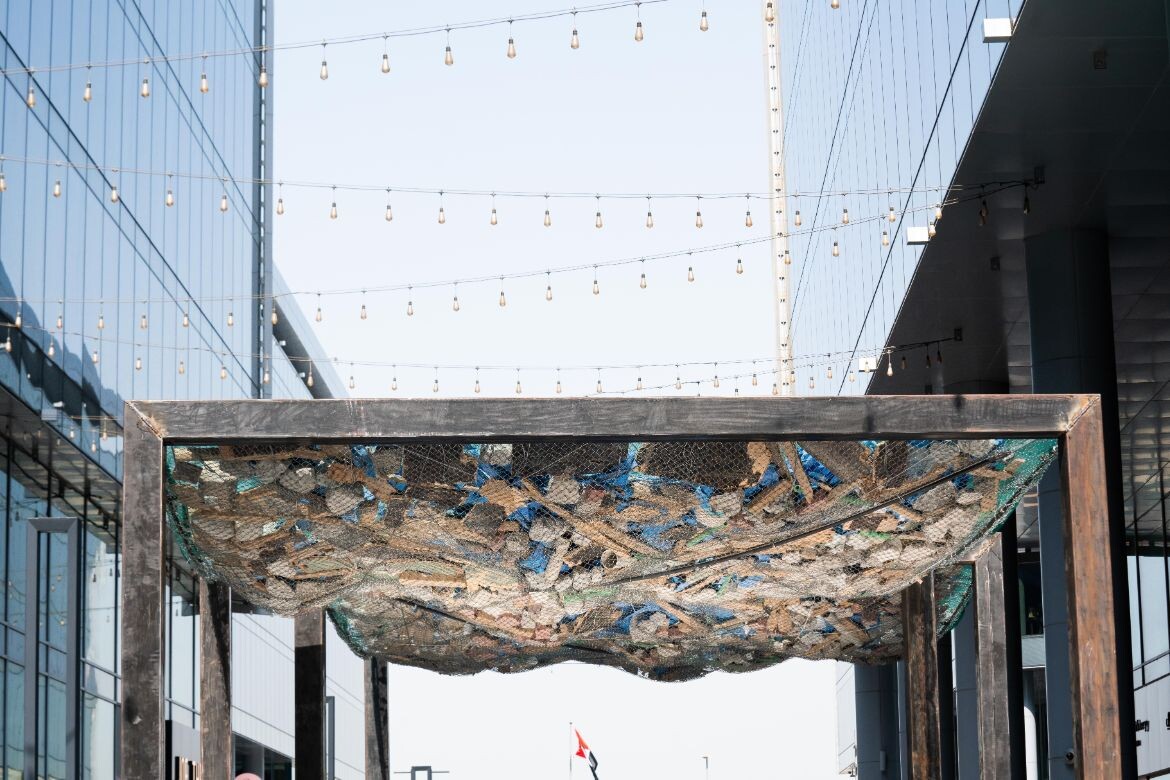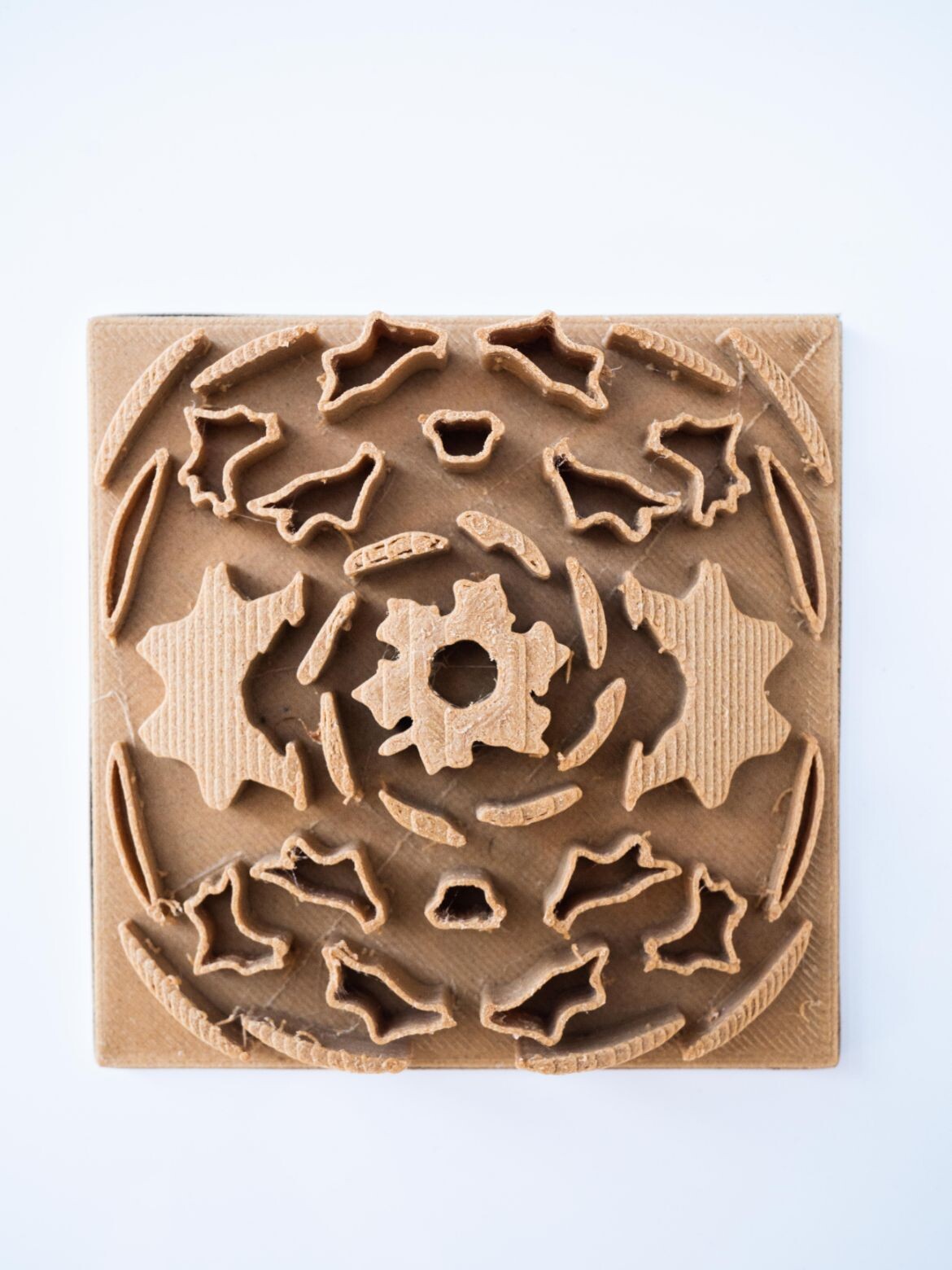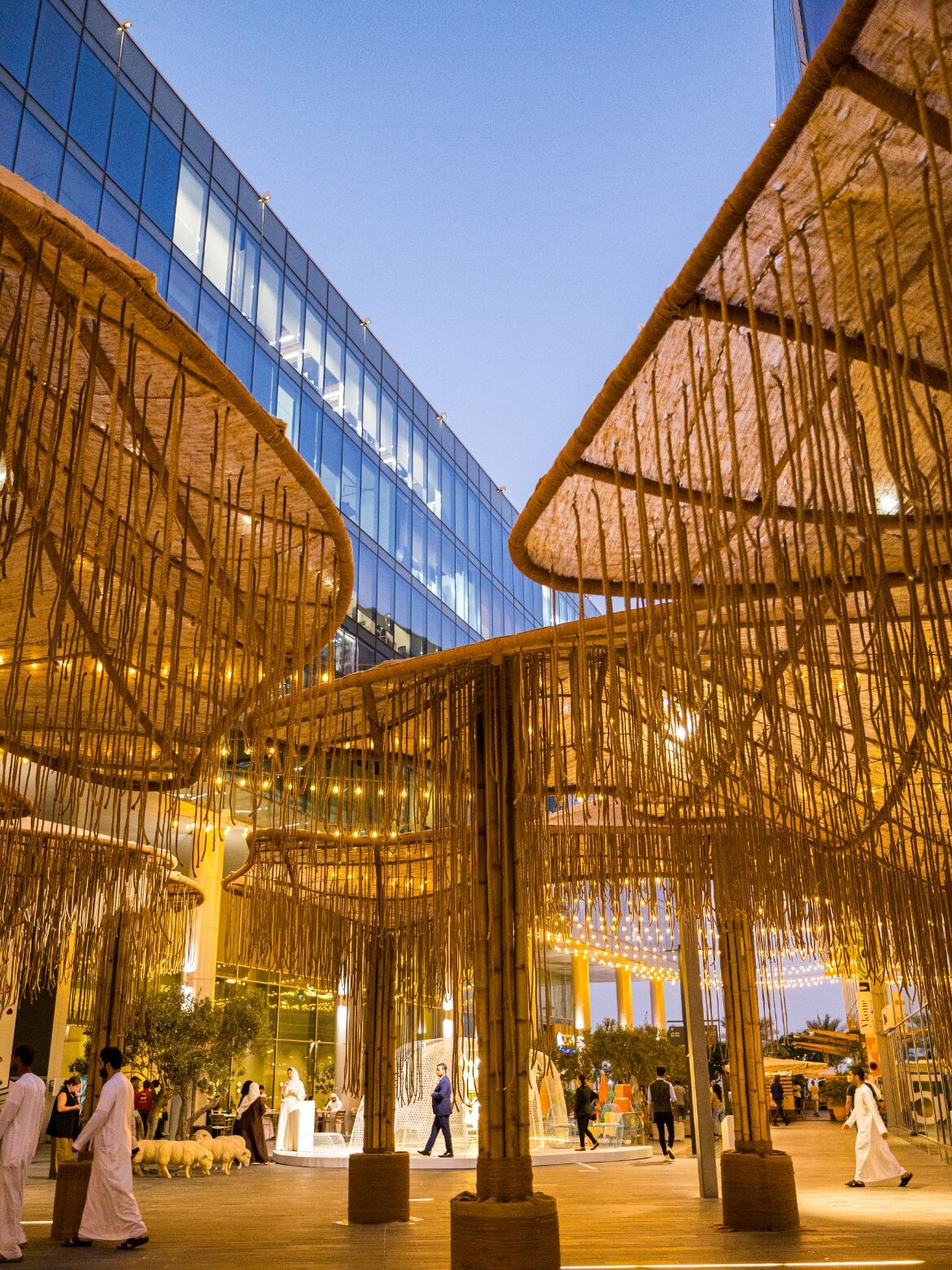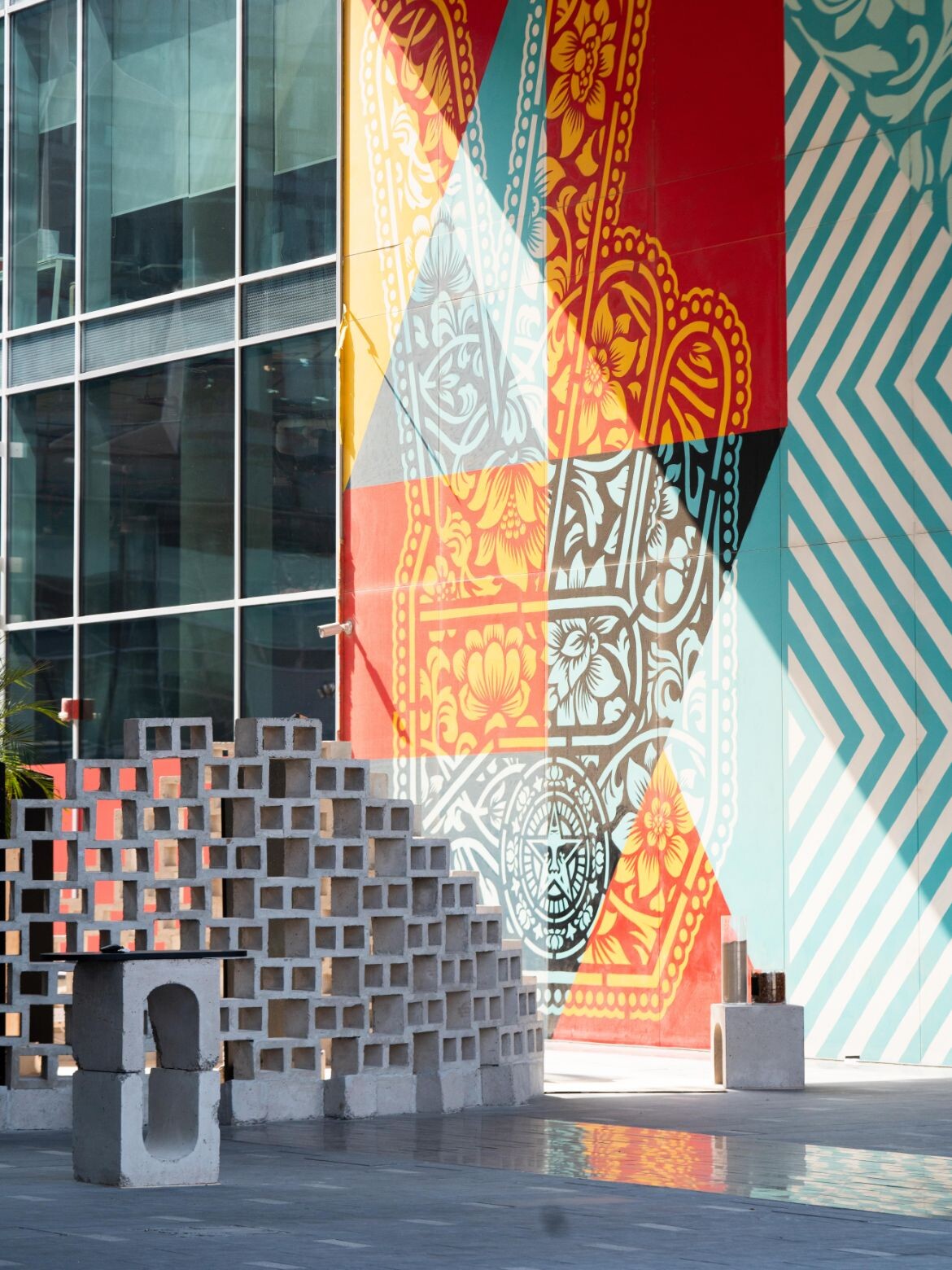From innovative architectural material solutions, to colourful works seeking solutions for the future, and playful metaphors for the issues of today. We deep dive into the creatives starting new conversations around sustainability.

March 6th, 2023
In Dubai, the fledgling design scene of past years has quickly emerged in a contemporary local design culture. This culminates with the Dubai Design Week, which incidentally took place in November last year. Continuing to build on strong foundations set eight years earlier, and thanks to its strategic partnership with Dubai Design District (d3), the event has served to shine a spotlight on global designers exploring new creative conversations around sustainability – that is ‘Design With Impact’.
“We [are] deeply committed to rethinking the regular, empowering talent and being an ever-growing ecosystem for creative thinkers,” says Khadija Al Bastaki, vice president of d3. “With this edition of Dubai Design Week, we [were] fortifying Dubai’s status as a UNESCO Creative City of Design and further growing the profile of the creative industries in our city.”
Here we round up 10 impressive examples of how sustainability is being addressed creatively through installations, conversations and thought-provoking design.

The construction industry is a huge producer of waste – and it was this topic that Saudi-Italian architecture practice Quartz Architects tackled with How Much Does Your Debris Weigh? Raw construction debris and waste was suspended in nets above an enclosed space, creating an unsettlingly heavy canopy that felt as if it might come crashing down at any moment. The resulting pavilion invited a distinct unease causing visitors to contemplate the impact of the building industry and the potentially disastrous effects of remaining complacent about the amount of waste it produces.


Giving new life to discarded or otherwise unused materials epitomises a responsible approach to sustainability and has given rise to the recycled art movement. Artist and designer Iman Ibrahim has transformed a dead tree into a series of intricately carved artworks that symbolise hope and opportunity. Second Life comprises 12 patterned relief carvings and a collection of sculptural floor lights created by carving incisions into the trunk and branches of the tree allowing it to literally radiate light in its new form.



Based between Amman, Jordan, and New York City, FADAA is an architecture collective with a mission to push the boundaries of environmentally responsive design – and is known for developing innovative materials from waste. Using crushed oyster shells from local restaurants mixed with natural, low-carbon lime, the group produced a collection of experimental bio bricks.
These were then used to build an otherworldly installation housing native plants that invited visitors to reimagine their relationship to the natural world and explore ways to live symbiotically.

Upcycled materials were a recurring theme at this year’s Dubai Design Week. While others used construction debris and waste materials to explore how we might approach these ideas in the future, Ahed Al Kathiri repurposed patterned textiles to create a sculptural interpretation of qamariyat – a traditional Yemeni window covering.
These colourful works evoke memories of her grandmother’s house and the way generations past have often used recycled fabrics to create domestic objects. By looking to the past, she posits a way to move into the future.



The UAE is home to vast mangrove forests – and these natural wonders were the inspiration behind the Once Upon a Forest installation by the Dubai branch of American architecture studio OBMI. The sculptural canopy structures evoke the impressive root systems of mangrove forests, and by transporting the mangroves to an urban context the installation poses questions about the relationship between cities and the surrounding natural environment.
“Our goal was to educate and inspire the community about the benefits and beauty of the mangrove forests by providing an immersive experience that ignites the senses and showcases nature’s power to mitigate climate change,” says the studio.



ARDH Collective is one of Dubai’s leading sustainability start-ups, with a focus on repurposing waste materials native to the UAE and MENA region to create innovative material solutions – think desert sand-based concrete, date-seed solid surface material, and the region’s first plant-based vegan leather.
For Dubai Design Week, the group created an architectural installation titled From the Dunes & Trees that demonstrates the potential of these revolutionary materials to build the future in the region, exhibiting the materials alongside the natural resources they are derived from. The founders also took part in a panel discussion in partnership with the Colab Digital materials library to discuss the evolution of sustainable materials.

A boxing ring might not be the first thing that springs to mind when thinking about sustainability, but for Beirut-based textiles, fashion and homewares brand BOKJA it was the perfect metaphor to send a hard-hitting message about sustainability. Adorned with the brand’s signature patterned textiles, a surrealist punching bag, and a quote by Einstein, Let’s Talk About the Weather! was one of the more artistic interpretations of the Design With Impact theme.
“We’re asking people to stop and engage in a conversation on some of the most pressing issues of today,” say the designers. “Let’s talk about the weather, air our opinions, and agree to disagree on a disjointed assemblage of items raised on a boxing ring.”

Interior designer Reem Al Bustani took inspiration from Suhail – an orange supergiant star located in the constellation Vela with particular importance in the Arab world. Not only is Suhail known as a reliable navigation tool for sailors and travellers of the past, its appearance also marks the changing of the seasons.
The poetic, sculptural installation is crafted from looped LED tube lights and mirror-finish metallic elements that evoke the symbolic star and the rhythmic sound of waves that accompanies the cooler weather.


This sculptural composition by Sara Alrayyes of Bahrain’s Orient Design Studio is made using upcycled gargoor fishing nets, which are traditionally used by fishermen in the UAE. The semi-circular cage-like nets are made from flexible metal wires, and have been inverted to create a permeable gathering space. Inside, furniture and accessories made from gargoor nets, and incorporating traditional palm tree weaving (sa’af) and naseej textiles produced by local Bahraini artisans are displayed, encouraging contemplation of the region’s evolving heritage and traditions.


Green living is often expressed through the “three Rs”: reduce, reuse, recycle – and this theatrical installation by Nada Zuhair and Riham Ahmed embraces this ethos. Titled RI-BBORN, it is a social gathering space constructed from a variety of salvaged materials and enclosed in a permeable facade of blue and orange ribbons that denotes an interior space that still allows for connection to the surrounding streetscape.
Some ribbons double as relaxed, hammock-style swing seats, and a sculptural assemblage of rocks and greenery at the centre of the scaffold-like structure alludes to the relationship between the natural and built worlds.
Dubai Design Week
dubaidesignweek.ae
We think you might like this article about the product designs of Noom.
A searchable and comprehensive guide for specifying leading products and their suppliers
Keep up to date with the latest and greatest from our industry BFF's!

Schneider Electric’s new range are making bulky outlets a thing of the past with the new UNICA X collection.

With the exceptional 200 Series Fridge Freezer, Gaggenau once again transforms the simple, everyday act of food preservation into an extraordinary, creative and sensory experience, turning the kitchen space into an inspiring culinary atelier.

Within the intimate confines of compact living, where space is at a premium, efficiency is critical and dining out often trumps home cooking, Gaggenau’s 400 Series Culinary Drawer proves that limited space can, in fact, unlock unlimited culinary possibilities.

They’re gorgeous, created through a cross-cultural design collaboration, feature sensational timber and have optimum functionality… don’t you just want to have them?

With a debaucherous past, Wonder has remodelled this dubious site into its contemporary studio.
The internet never sleeps! Here's the stuff you might have missed

With a debaucherous past, Wonder has remodelled this dubious site into its contemporary studio.

Investigating the process of a Reflective Industry Practice Model PhD Architecture and Design at RMIT University, we discover just what is involved and how the course influences those who participate.